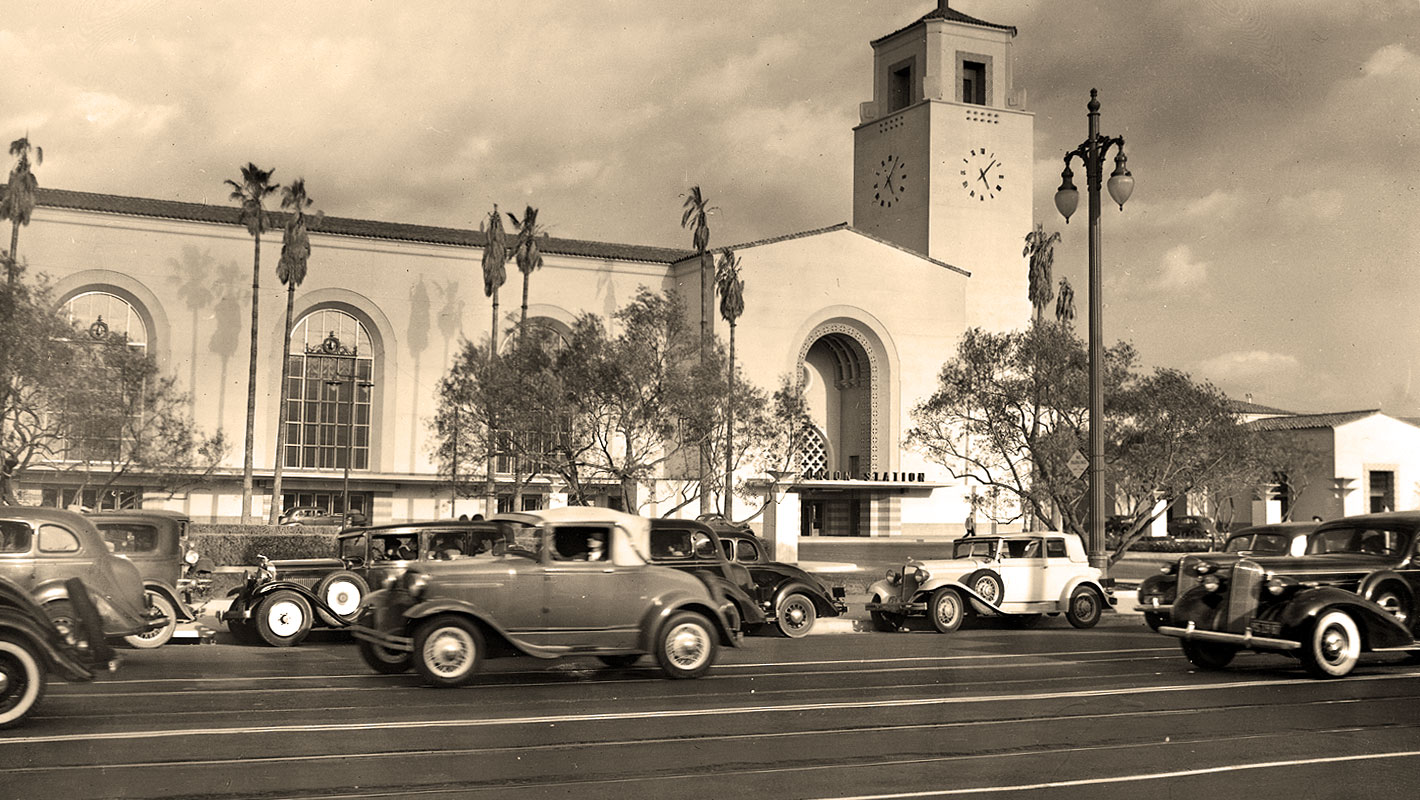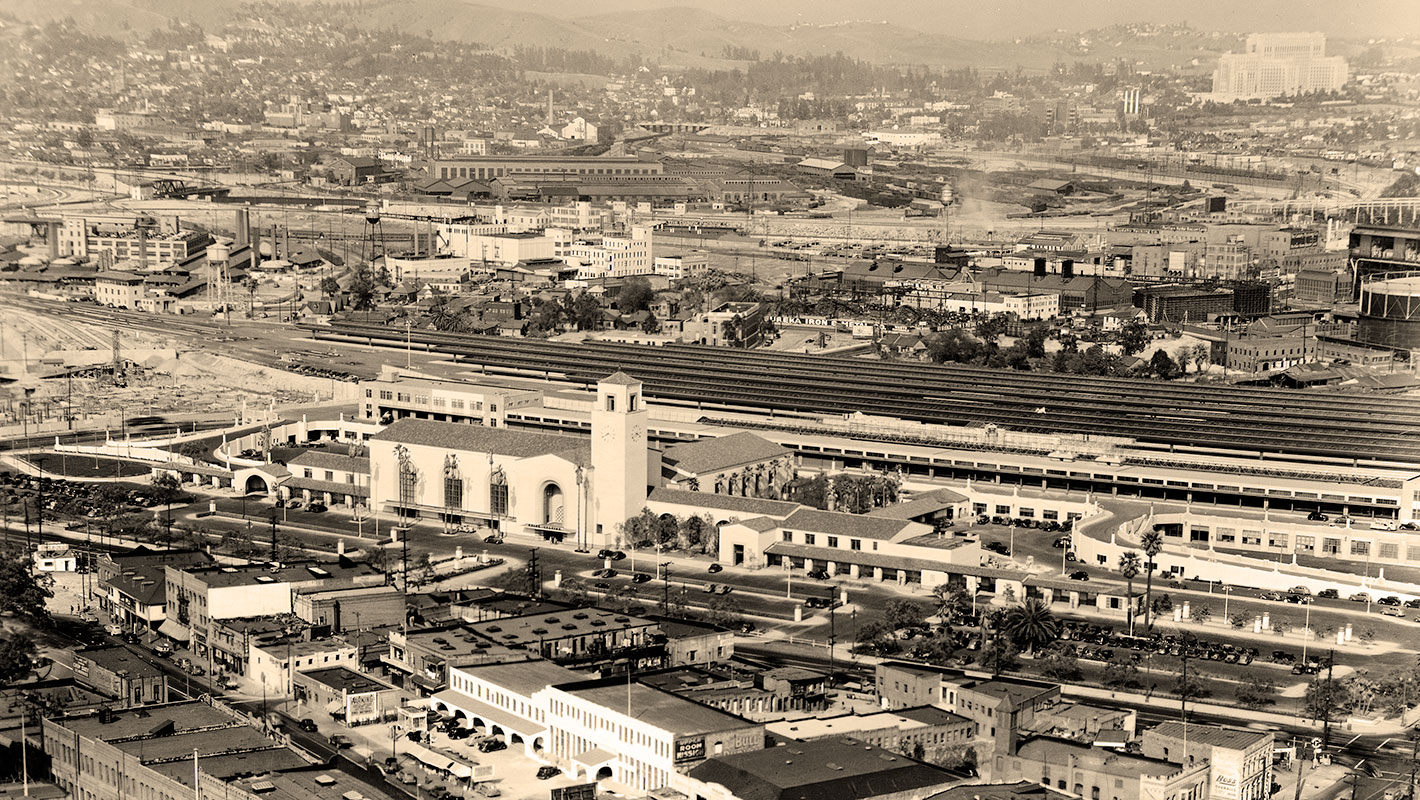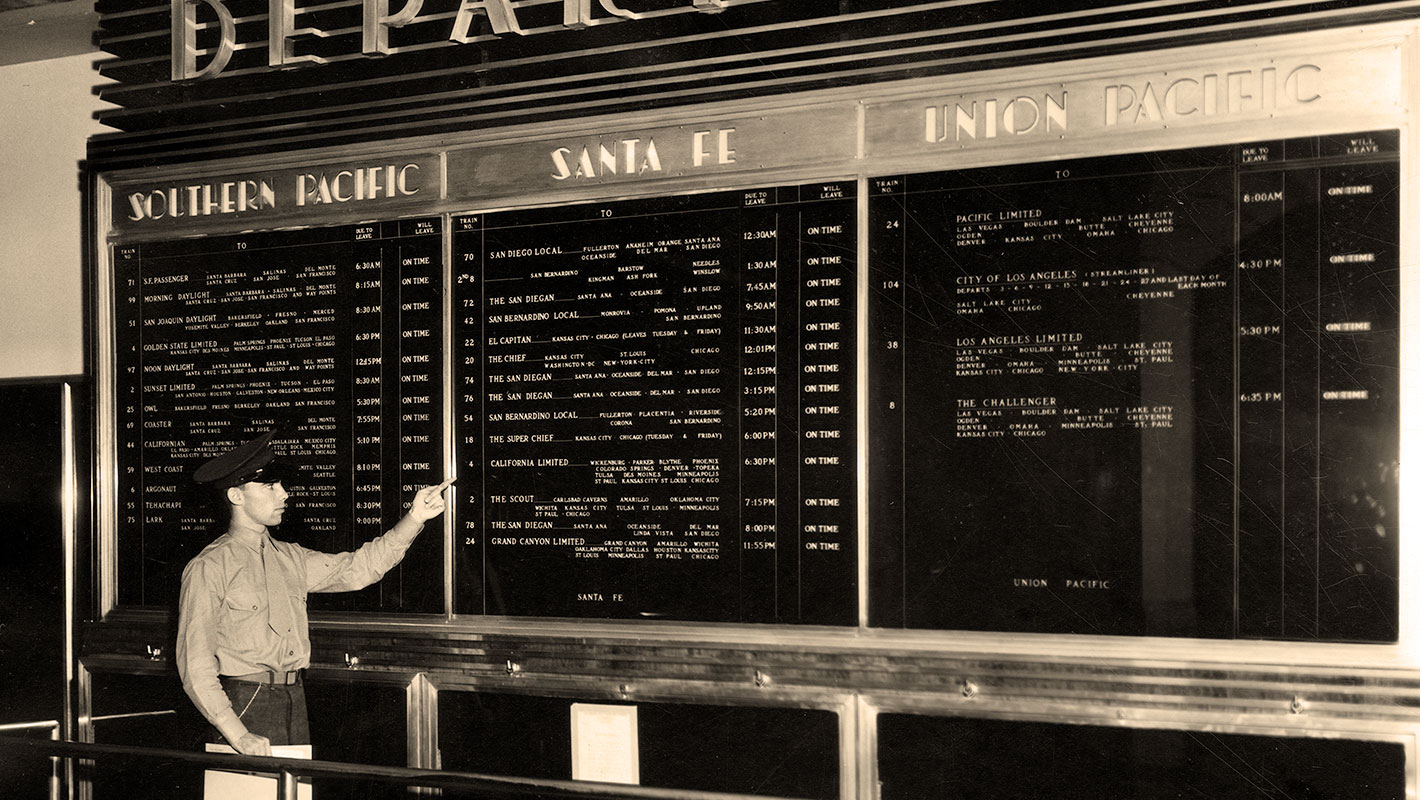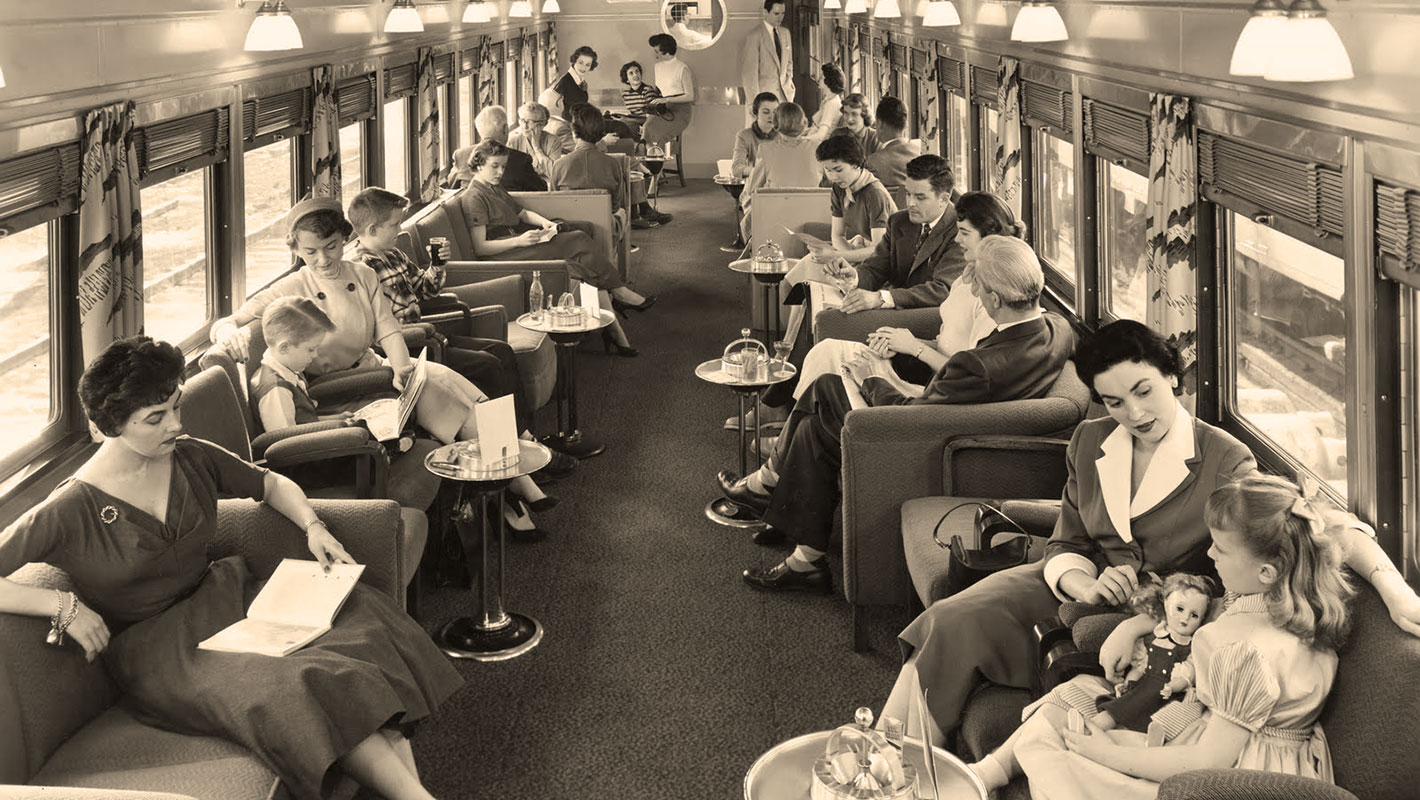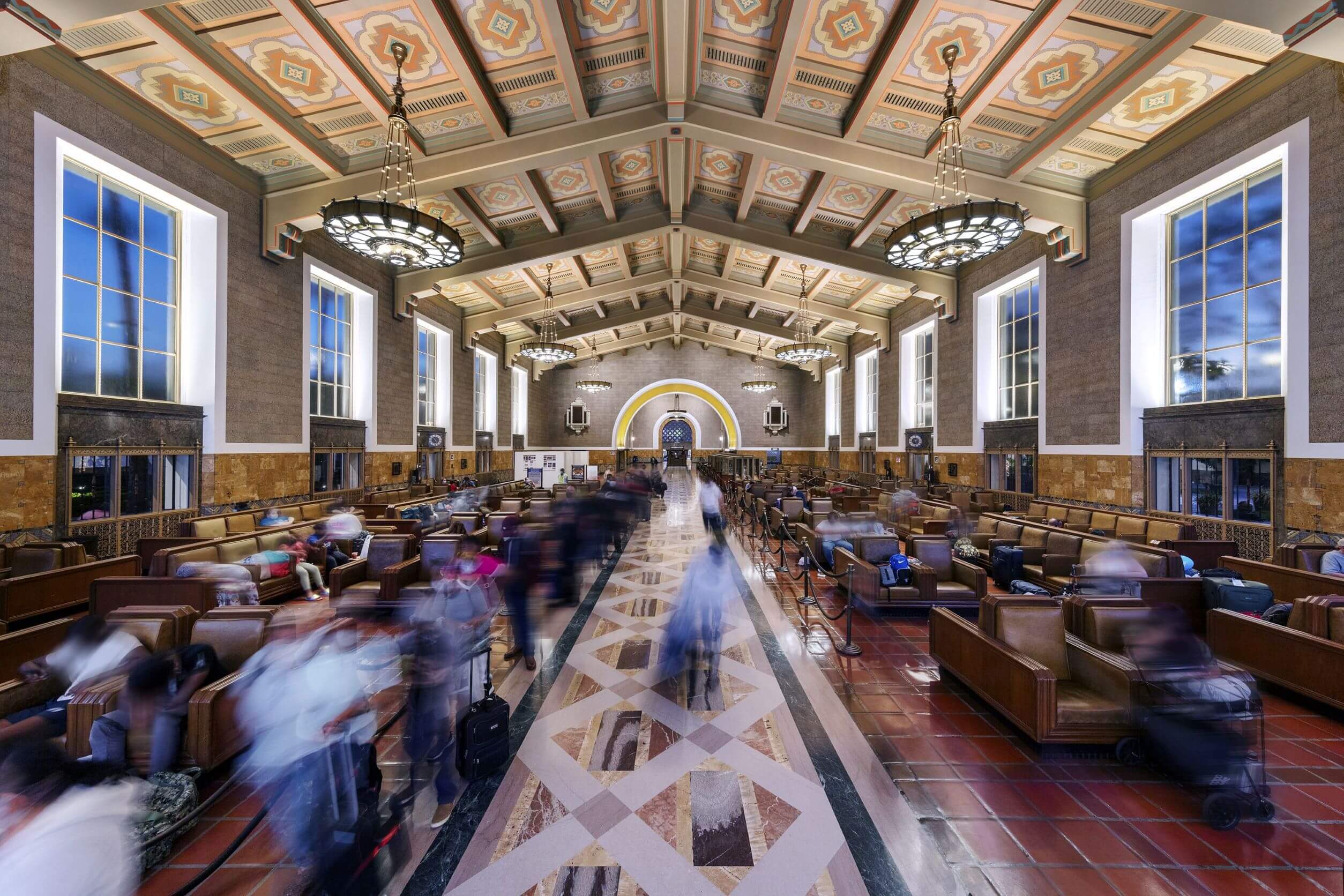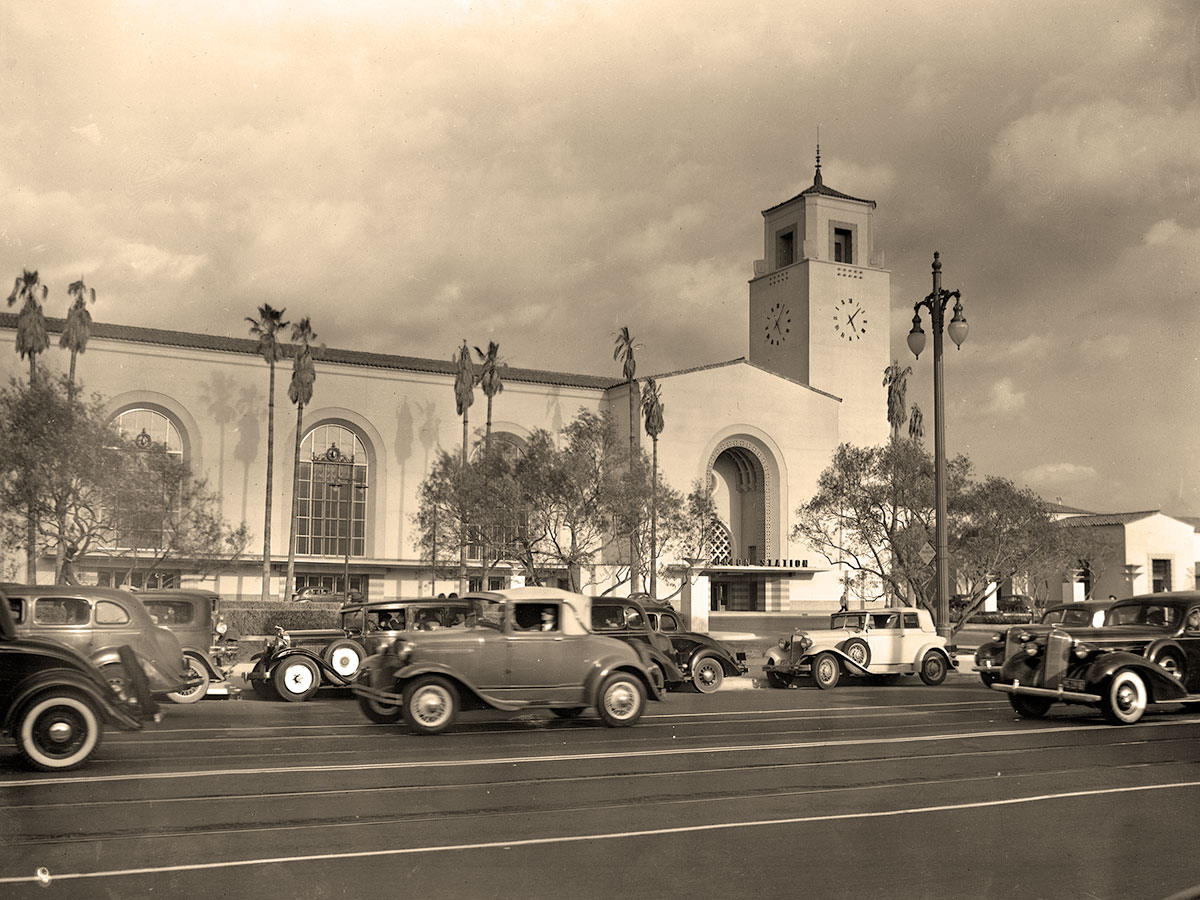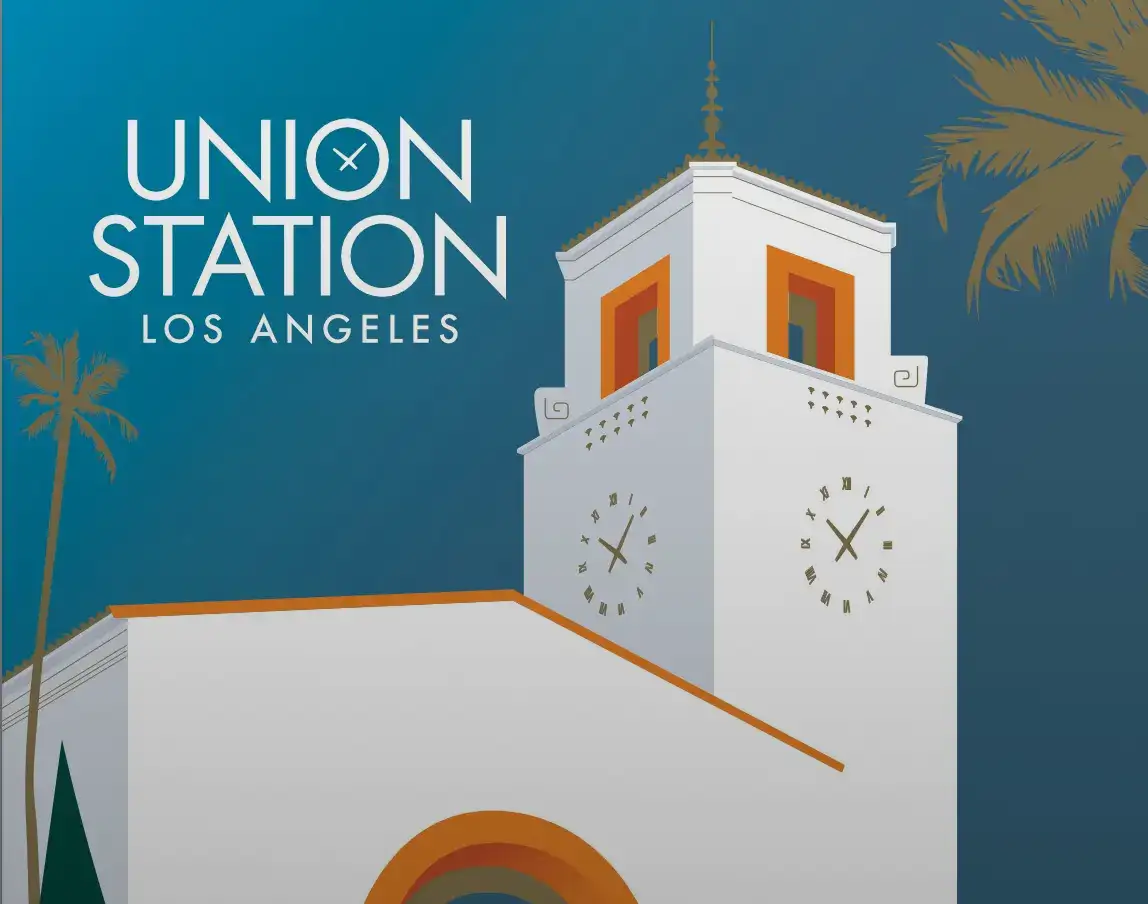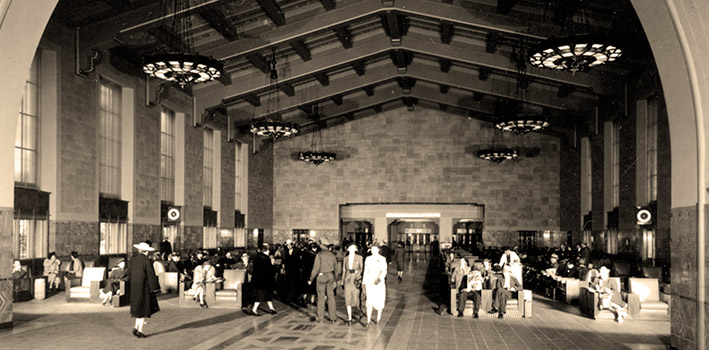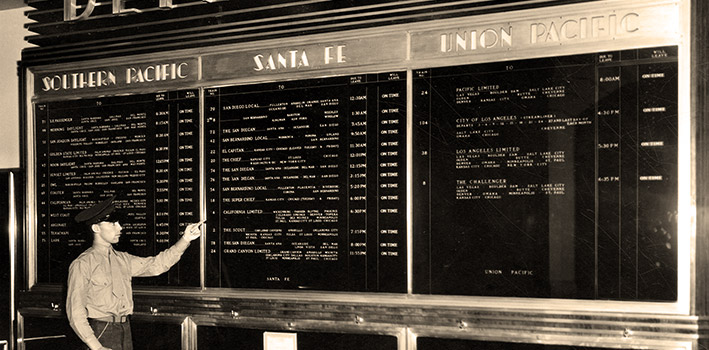History
Los Angeles Union Station is the largest railroad passenger terminal in the Western United States and is widely regarded as “the last of the great train stations.” The Station was commissioned in 1933 as a joint venture between the Southern Pacific, Union Pacific, Atchison, Topeka and Santa Fe railroads and was intended to consolidate the three local railroad terminals.
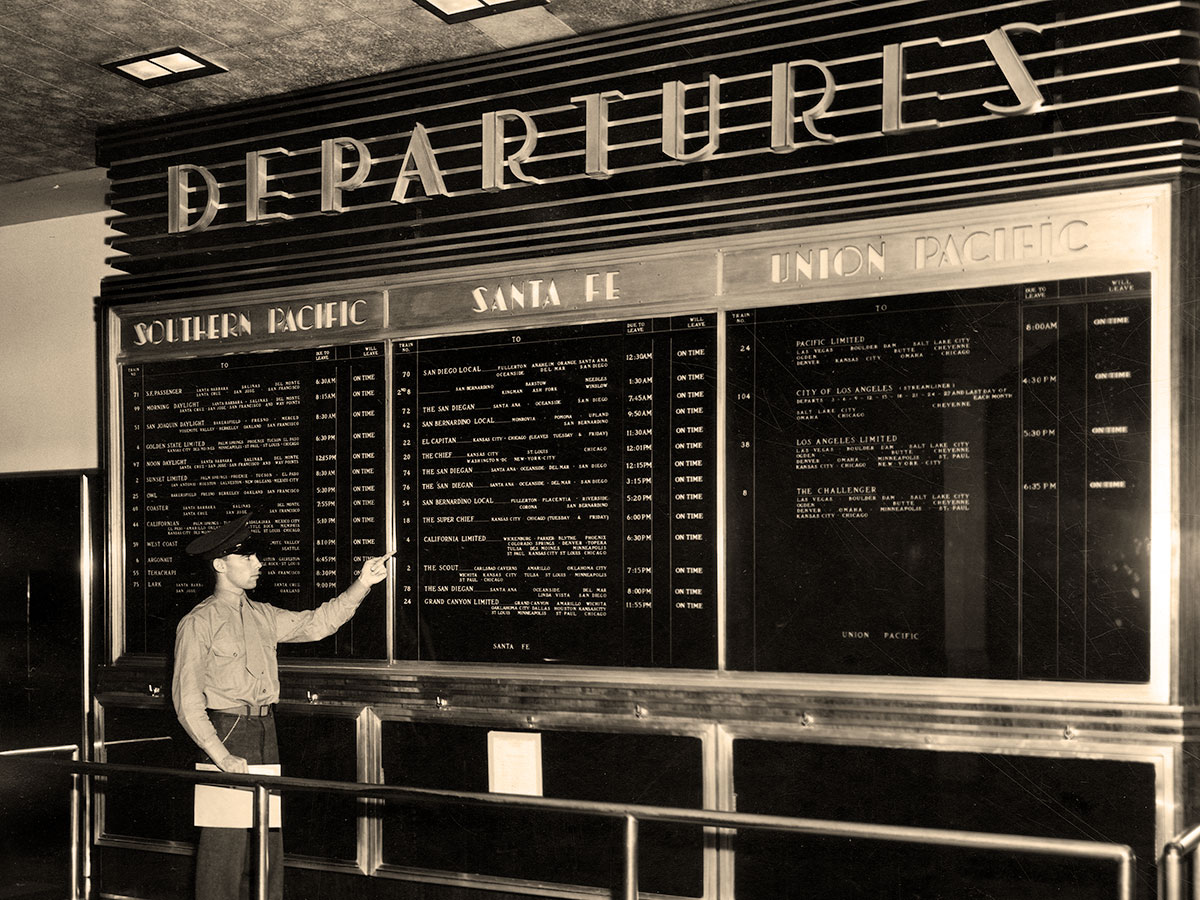
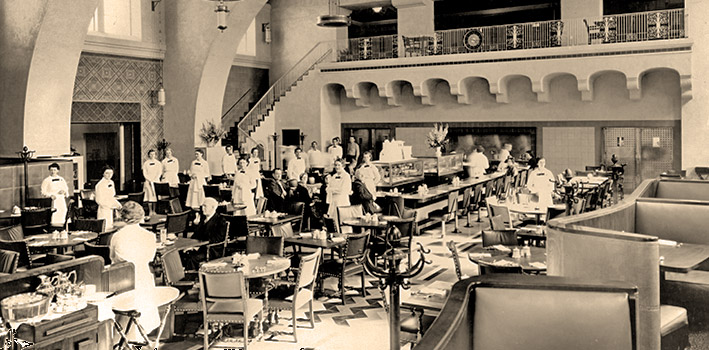
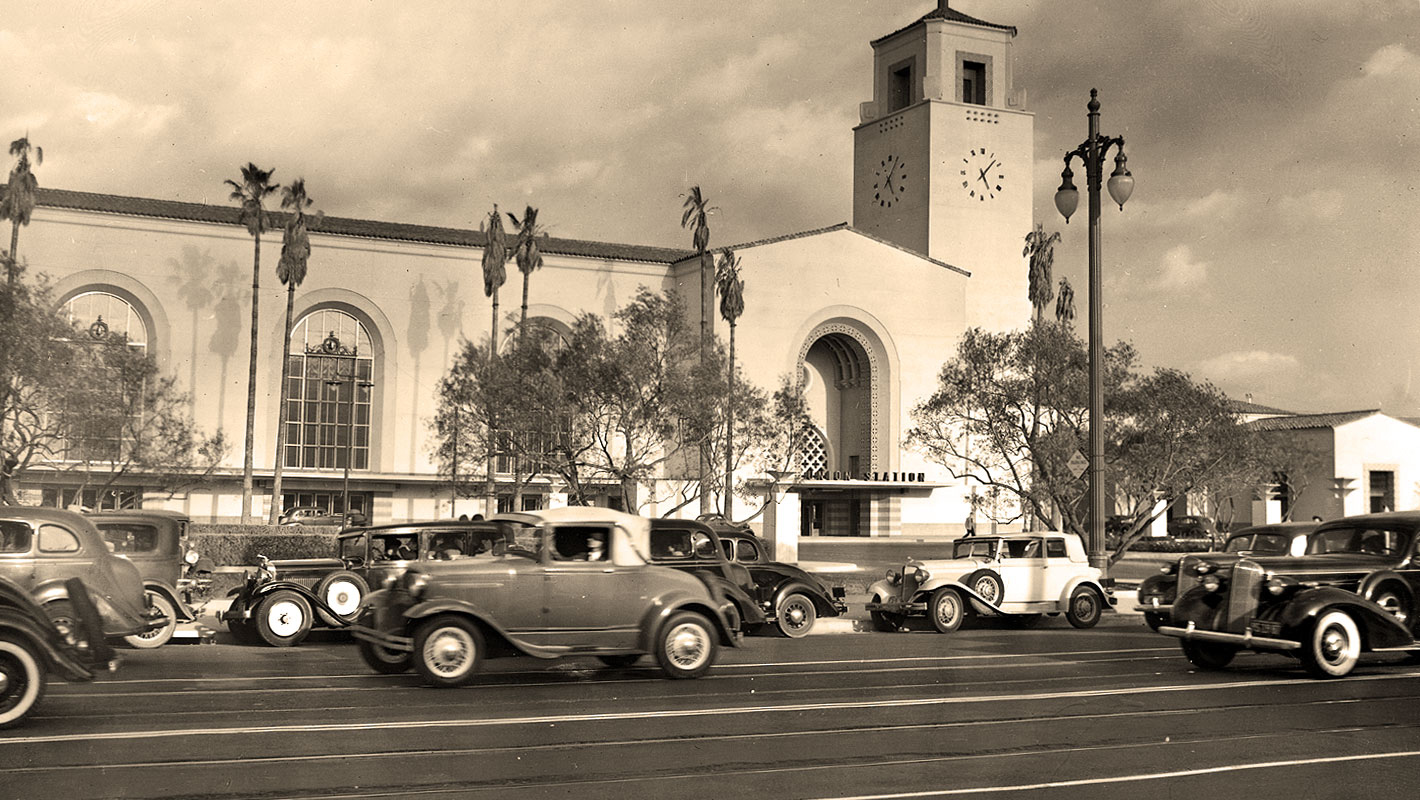
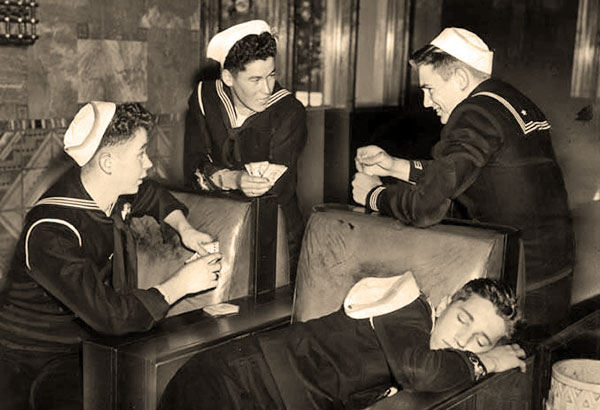
"The Last Of The Great Train Stations"
The Station was designed by the father-and-son architect team of John and Donald Parkinson with an innovative blend of Spanish Colonial, Mission Revival and Art Deco architecture now commonly referred to as Mission Moderne. The stunning facility was completed in 1939 for a reported $11 million and opened with a lavish, star-studded, three-day celebration attended by a half million Angelenos.
Within just a few years of opening, Union Station transformed into a bustling 24-hour, seven-day-a-week operation with as many as 100 troop trains carrying tens of thousands of servicemen through the terminal every day during World War II.
By the 1950s Americans favored cars and planes to the rails, and there were fewer passengers throughout the Station, but it remained a vital part of LA’s transportation scene for decades. Union Station was designated Los Angeles Historic-Cultural Monument No. 101 in 1972 and listed in the National Register of Historic Places and California Register of Historical Resources in 1980.
In the eight-plus decades since its opening, Union Station has captured the spirit and soul of Los Angeles and has emerged as a vital portal to the promise of the California dream and a vibrant destination for arts and culture.










